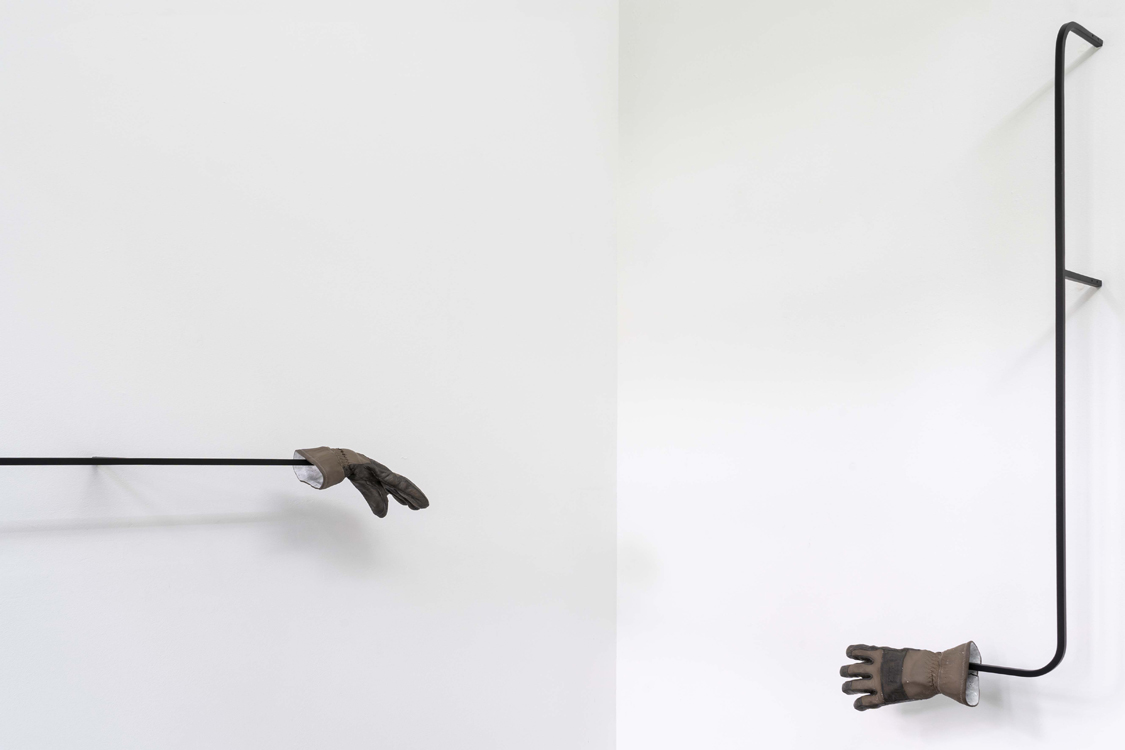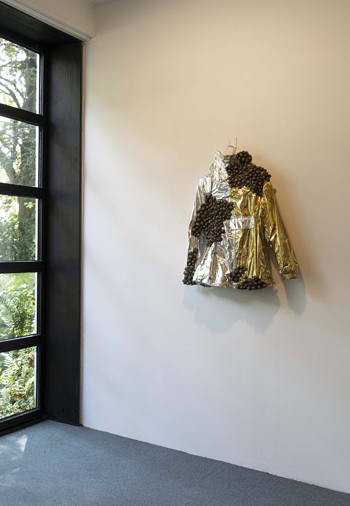Exhibition information
Lena von Goedeke
Stasis
Stasis
16.7. - 24.10.2020, Feature-Room, Galerie m.
"Stasis" describes the state of absolute standstill. Lena von Goedeke makes particular use of the peculiarities of fired ceramics, in which time is not frozen, but fired solid. When every molecule freezes and even time no longer passes, a kind of eternity is created. This state can only be broken by force. At the same time, the artist takes into account the archaeological significance of the material, which lasts for millennia and can provide conclusions about entire cultures as well as individual fates.
In Stasis, on the one hand, there are the cameras and photo tripods of the series A fleeting mind, fragmented to varying degrees, which are scattered on the ground like found objects, promising a deceptive, original uniformity. Despite their apperent similarities to the original object, the material is never hidden. The ceramics reveal themselves in the fractures and fragments, as well as in the various glaze techniques. The photographic equipment, whose basic function is to capture and freeze a moment, reflects in its fragment a paradoxical mental state between the experienced moment and the attempt to remember it.
In the work Hestra I + II, on the other hand, thick gloves are attached to the ends of two railing rods. In contrast to the cameras, only a closer examination reveals that they are also glazed ceramics and thus deceptively genuine imitations. The material is used here as an archaeological document for the clothes that von Goedeke wore on her travels in the Arctic. The thick layer protected her as an individual from a hostile place and at the same time formed the membrane that enabled the artist to dissolve the distance between herself and raw nature. As with the archaeological find, the experiences and sensations of this journey are preserved in the ceramic. It provides information about the extreme conditions and sets a monument to the adventurous undertaking.
Nike is also a work that, like the fragmented cameras, suggests an original functionality. The gold and silver shimmering surface is reminiscent of rescue blankets used by rescue workers, promising protection from the weather as well as luxurious material, while in fact it is the epitome of functionless "fast fashion". Its flawless surface is colonised by grey-brown barnacles, which are otherwise known from ship hulls, jetties, but also the skin of whales. The contrast between natural, maritime fauna and synthetic artefact raises the question of which of the two elements alienates and disturbs the other. So, if we perceive the perfect surface of the jacket as being damaged, does the synthetic material penetrate into the biological habitat or does the fusing ultimately create something new, unique and equivalent? In this case, the maritime incrustation acts as an antithesis to the artefact, the evaluation of which is left to the viewer.
With Stasis, Lena von Goedeke questions the ability of the perception of time, the existence of the moment and the (im)possibilities of capturing it. At the same time, the artist once again demonstrates her fine feeling for material and materiality both in terms of craftsmanship and emotion.
"Stasis" describes the state of absolute standstill. Lena von Goedeke makes particular use of the peculiarities of fired ceramics, in which time is not frozen, but fired solid. When every molecule freezes and even time no longer passes, a kind of eternity is created. This state can only be broken by force. At the same time, the artist takes into account the archaeological significance of the material, which lasts for millennia and can provide conclusions about entire cultures as well as individual fates.
In Stasis, on the one hand, there are the cameras and photo tripods of the series A fleeting mind, fragmented to varying degrees, which are scattered on the ground like found objects, promising a deceptive, original uniformity. Despite their apperent similarities to the original object, the material is never hidden. The ceramics reveal themselves in the fractures and fragments, as well as in the various glaze techniques. The photographic equipment, whose basic function is to capture and freeze a moment, reflects in its fragment a paradoxical mental state between the experienced moment and the attempt to remember it.
In the work Hestra I + II, on the other hand, thick gloves are attached to the ends of two railing rods. In contrast to the cameras, only a closer examination reveals that they are also glazed ceramics and thus deceptively genuine imitations. The material is used here as an archaeological document for the clothes that von Goedeke wore on her travels in the Arctic. The thick layer protected her as an individual from a hostile place and at the same time formed the membrane that enabled the artist to dissolve the distance between herself and raw nature. As with the archaeological find, the experiences and sensations of this journey are preserved in the ceramic. It provides information about the extreme conditions and sets a monument to the adventurous undertaking.
Nike is also a work that, like the fragmented cameras, suggests an original functionality. The gold and silver shimmering surface is reminiscent of rescue blankets used by rescue workers, promising protection from the weather as well as luxurious material, while in fact it is the epitome of functionless "fast fashion". Its flawless surface is colonised by grey-brown barnacles, which are otherwise known from ship hulls, jetties, but also the skin of whales. The contrast between natural, maritime fauna and synthetic artefact raises the question of which of the two elements alienates and disturbs the other. So, if we perceive the perfect surface of the jacket as being damaged, does the synthetic material penetrate into the biological habitat or does the fusing ultimately create something new, unique and equivalent? In this case, the maritime incrustation acts as an antithesis to the artefact, the evaluation of which is left to the viewer.
With Stasis, Lena von Goedeke questions the ability of the perception of time, the existence of the moment and the (im)possibilities of capturing it. At the same time, the artist once again demonstrates her fine feeling for material and materiality both in terms of craftsmanship and emotion.
A fleeting mind III + IV, 2020
glaced ceramics
glaced ceramics

Hestra I & II, 2019
ceramics, glaze, steel
each 100 x 12 x 15 cm
ceramics, glaze, steel
each 100 x 12 x 15 cm

Nike, 2019
jacket, acrystal, glass fiber, cellular plastic
ca. 100 x 70 cm
jacket, acrystal, glass fiber, cellular plastic
ca. 100 x 70 cm
